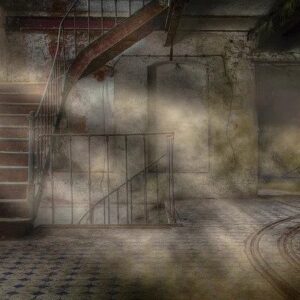Toward Black Wonder: How Nicole Sealey Makes Erasure a New Way of Seeing
Safiya Sinclair on Ferguson Report: An Erasure
What does it mean to live in a nation determined to erase you? Or to be defined by the silence of such erasure? From a young age, I learned quickly, and intimately, all the ways one person could throttle another in the name of tradition, in the name of order. When violence comes armed and hooded in the guise of a nation, whole communities are lost to the margins, whole histories effaced. How do we begin to re-imagine our future from such violent origins? What will be saved by those who have been throttled, and what will be changed? “What’s an answer/ to black, I wonder?” Nicole Sealey asks in The Ferguson Report: An Erasure. With clear-eyed precision and visionary brilliance, she shows us how to write toward wonder.
In The Ferguson Report: An Erasure, Sealey takes a document that began with death, and re-imagines a space that is ultimately about life and its possibilities. The original Ferguson Report was commissioned by the Department of Justice after Mike Brown was shot to death by a police officer in Ferguson, Missouri, triggering waves of protests and calls for systemic change against racist policies and police violence. This collection challenges the cyclical nature of that racial violence. Through erasure, a poetic form traditionally used to carve away at the page in a kind of fixed experiment, Sealey instead blooms something transformative and entirely new. “They say wait,/ so we wait, as if for some/ fragrant flower that unfurls/ one night a year,” she writes, masterfully re-shaping words from the background of the document, to resonant effect: “They say shh,/ so like trees we mouth cross/ sounds of flags beaten to shreds/ by wind.”
Through erasure, a poetic form traditionally used to carve away at the page in a kind of fixed experiment, Sealey instead blooms something transformative and entirely new.What emerges from Sealey’s erasure is new way of seeing. Every line of each lifted poem is painstakingly and beautifully drawn, with an eye toward radical change. Sealey makes meaning, lyric, and even rhyme, from the flattened language of the original document. Suddenly, there are wildflowers emerging from the concrete. “Who among us/ is stunned by how fast rain/ pours from the sky?” she writes, breaking open the blunt sterility of the original report to the lyrical expanse of the natural world, where the poet is “stunned/ by how the sky, clear at first,/ self-corrects, as if to say, “I mean/ this, not that. That, not this.” Often, Sealey’s attention is rooted in the details of the landscape: “Then the birds began to fly/ low and patternless,/ as if they were each two/ hands joined, just pretending/ at birds—.” Each line forces time to slow in the reading. Some words stretch across the entire page, and the eyes must take time to assemble the meaning from the shards. There is no escape in the seeing. I held my breath as I read each page, feeling each word bear an infinite weight.
Sealey’s work is skillful and distinct, unbound by the constraints of erasure, and this book radiates beyond the form with her rigorous lyric. “Horses, hundreds, neighing—/ part reflex, part reason,/ part particular urge./ At gunpoint, among them/ you are.” There is such mastery in how these poems were made: Sealey not only uses whole words taken directly from the document (like a traditional erasure), but she also plucks individual letters from across each line to stitch together her own words, like finding notes in the dark to make her own resilient song.
Though it is an erasure, this is also a collection in which, stunningly, the speaker appears. “A woman stretches/ the truth to disappear it, throws/ her voice to animate it,” she writes, entangling with the difficulty of her own creation, “As when,/ I imagine, the word was made/ flesh.” Once more, from the disparate fabric of American history, the Black woman invents herself. The poet emerges from the document in fierce introspection, disrupting the foundations of her own form, giving birth to something wondrous and chimerical, instead of cutting it away.
Perhaps most crucially, Sealey contends with the Ferguson Report by challenging the violent condition from which it was made. She distills the brutality of the facts down to their most potent truth. In one section, she excavates the word “force” from the document to underscore the violent thrum of its origins: “…use-of-force. Force/ of habit. Of nature/ Force/ feed. Force down. Force/ his hand. Force in line./ Full force. By force. Show/ of force. Brute force. Blunt/ force to be reckoned with./ Force a smile. As law/ enforcement turns out/ in force. To force/ open your door.” This is not only poetic repetition being used as an expression of the circumstances of being Black in America, bent under the malevolent force of its racist systems—it’s also an examination of the cyclical nature of violent repetition as a fundamental aspect of national character.
She distills the brutality of the facts down to their most potent truth.Though Sealey writes toward elegy in The Ferguson Report: An Erasure, she is also writing toward hope. Through this dichotomy, two different readings are offered by the book: the first sections, the erasure, allow us to contemplate the state-sanctioned violence against Black people that facilitated the report’s commissioning. We are asked to contemplate the personal, political, and historical implications of erasure. Then the final section, the lifted poems, gives us space to imagine a kind of future in which Black people are free from this violence. In “Poetry is Not a Luxury,” Audre Lorde envisions poetry as the main conduit to a similar future, where poems are “a bridge across our fears of what has never been before.”
What world would we make for ourselves if given the chance to create it? Without racism and its erasure, who would we be free to be?
There is a powerful Afro-Futurist desire at the core of this book, in the way that Sealey uses erasure to write toward an obsolescence of Black trauma. Ultimately, Sealey yearns for a future in which neither The Ferguson Report, nor this erasure, would ever need to exist. In “In Defense of ‘Candelabra with Heads,’” a poem from her first collection, Sealey poignantly explores a similar Afro-Futurist desire for a radical Black future of change:
A hundred years from now…
when all but the lucky are good
and dead, may someone happen upon the question
in question. May that lucky someone be black
and so far removed from the verb lynch that she be
dumbfounded by its meaning.
With this book, Nicole Sealey has redefined the genre of erasure and shown us what the form can do when the cruelty of silence is transformed into poetry. Here is what erasure becomes in the capable hands of one our very best poets, a poet descended from the formerly enslaved, from so many erased from history. Sealey’s hope is a necessity that makes the future of Black survival possible. Centering on the book’s foundational question of Black erasure, and the silence that still shapes it, Sealey asks of our existence, “What’s an answer/ to black, I wonder?” To which Romare Bearden answers: You have to look at it like a melody.




















